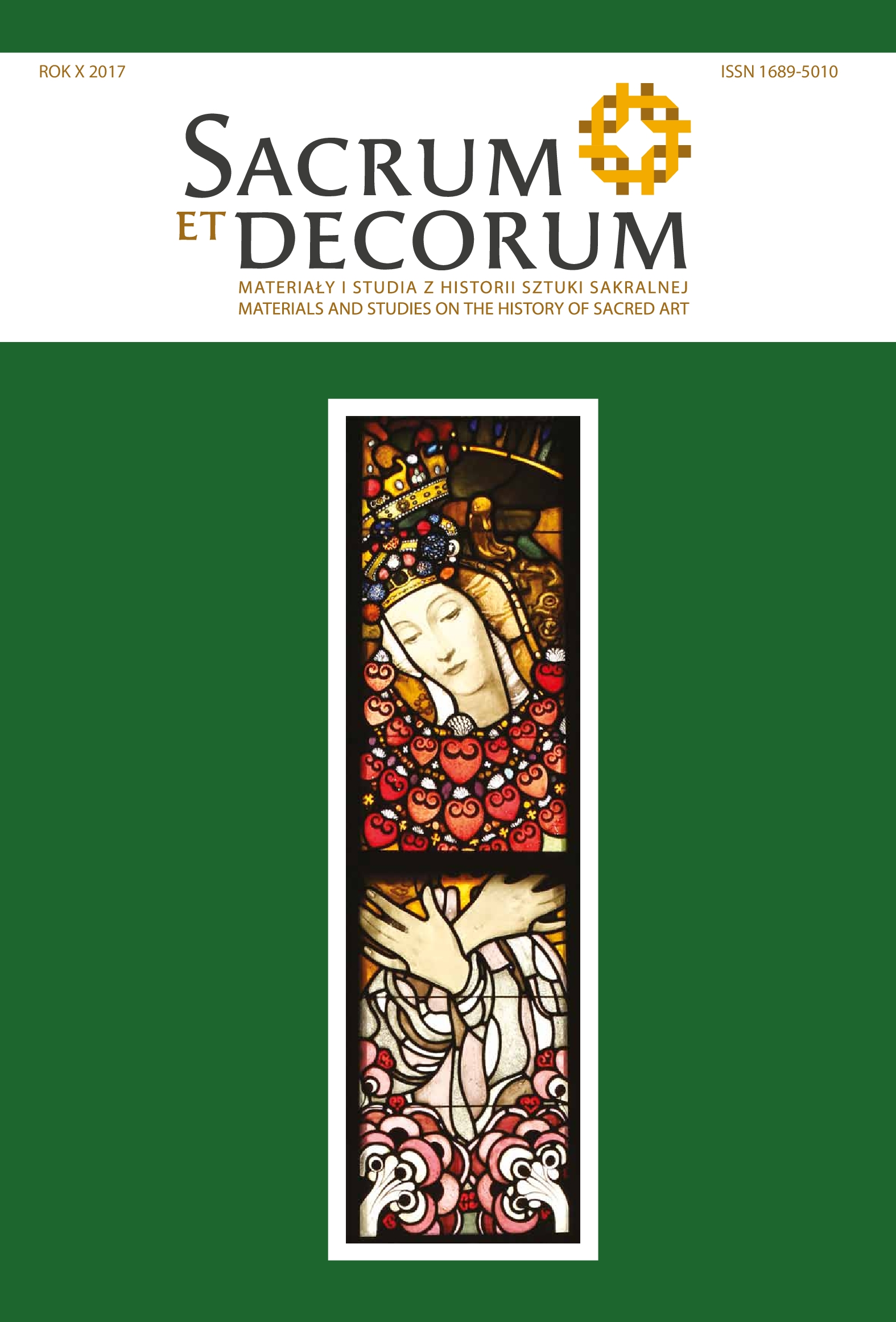Illustrated Polish Bible by Leopold Nowotny and the iconography of the history of Poland in the Nazarene art
Keywords:
Cyprian Kamil Norwid, Leopold Nowotny, religious painting, 19th century, Brotherhood of St Lucas, Illustrated Bible (Bilderbibel), TurewAbstract
In 1872 Cyprian Kamil Norwid voiced an appeal to save a collection of drawings by Leopold Nowotny, who named the future Illustrated Polish Bible. The author hereof presented the idea of an “illustrated bible”, as was undertaken by the Brotherhood of St Lucas in the art of the 19th century, whose artistic heir was Leopold Nowotny. He created several dozen drawings showing religious scenes set in Nazarene aesthetics. These depictions do not differ much from the classical versions of cycles of paintings from the history of the Old and New Testaments. The author seeks, therefore, answers as to why Norwid saw in them paintings from the “Polish” bible. This issue is analysed with reference to the Nazarene concept of history in which, according to the scholastic idea of time, particular events become a repetition of the concept of the story of salvation – the most important lesson in the message of the Catholic theology of the Bible. It is indicated that the Nazarene aesthetics, rooted in such a concept of time, is strictly related to the semantics of the work. The archaic, anti-naturalist form of the paintings of the Brotherhood of St Lucas is, therefore, an element of a conscious attempt at historiosophy, which is the basis for understanding the core of this artistic movement. This connection of form and content in the works of the Nazarenes was described by Cordula Grewe as “historical symbolism”, which connects the holy and secular histories and moves the profanum into the sphere of the sacrum. This perspective on the Polish version of biblical history would feature depictions of saints by Nowotny. In the theological sense, the copies of biblical history are, in fact, the fates of particular saints – followers of Christ. Events from the history of the nation were for the members of the Brotherhood of St Lucas also a repetition of the history of salvation. In Polish art, the only full realization of this concept is the work of Edward Brzozowski Bolesław Chrobry and Otton III at the grave of St Adalbert in the Golden Chapel in Poznań cathedral. There are, however, no references to the history of Poland in the art of Nowotny, who devoted himself only to producing religious paintings. In the Nazarene concept of history, this did not have to mean a lack of “Polishness” of these works; they might be placed in the political context as a manifestation of Catholicism with conservative values being the basis of the founding of the Golden Chapel (Chapel of the Kings of Poland) and the chapel in Turew, where in the altar Nowotny’s painting of the Immaculata was placed. Bringing up the idea of creating the Illustrated Polish Bible, Norwid referred not only to the collection of graphics and paintings by Nowotny, but to the project of creating a sacred-national painting movement, and the very idea of collecting illustrations for the Illustrated Polish Bible may be understood as another attempt at the sanctification of national history in the art of Polish romanticism.Downloads
Downloads
Published
How to Cite
Issue
Section
License
Copyright (c) 2017 Sacrum et Decorum

This work is licensed under a Creative Commons Attribution-NonCommercial-NoDerivatives 4.0 International License.
In line with the Open Access policy, authors retain full copyright to their articles – without restrictions.
Authors can deposit their articles in a repository of their choice.


